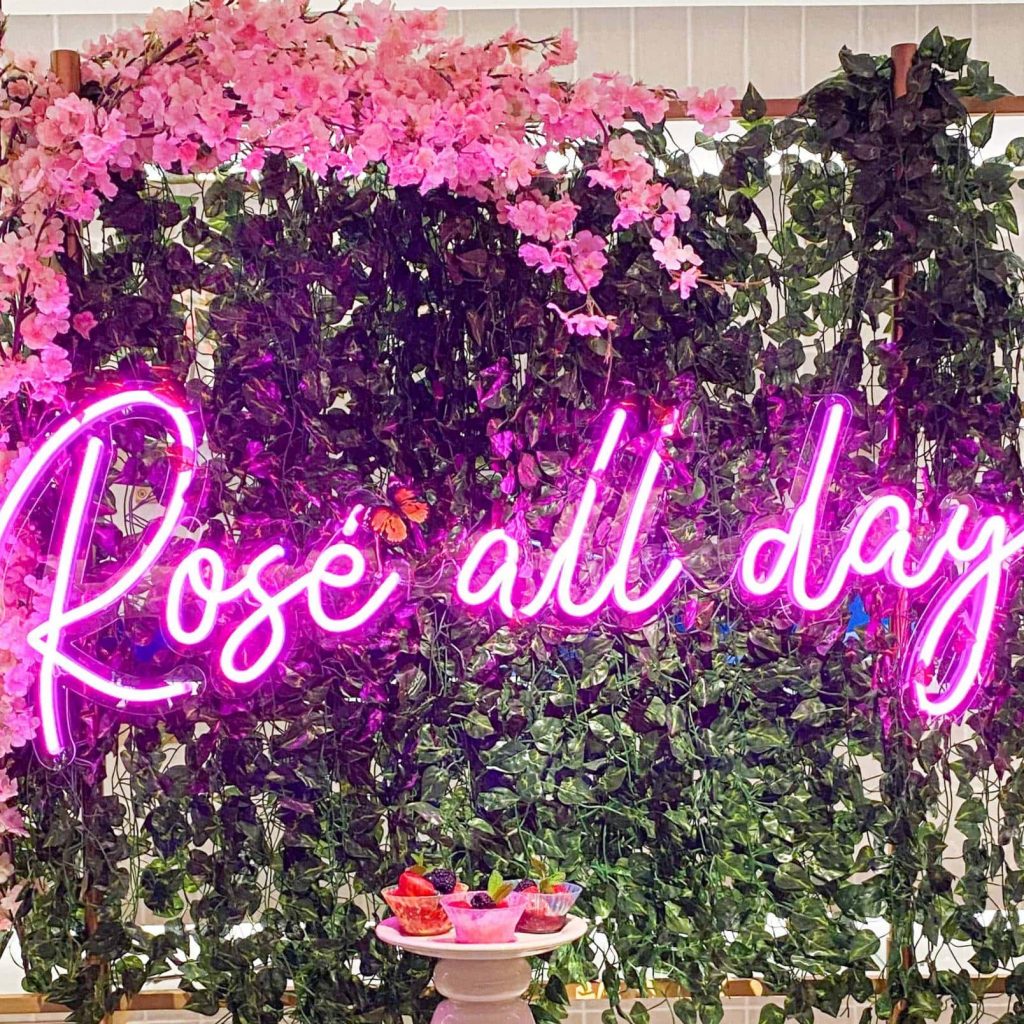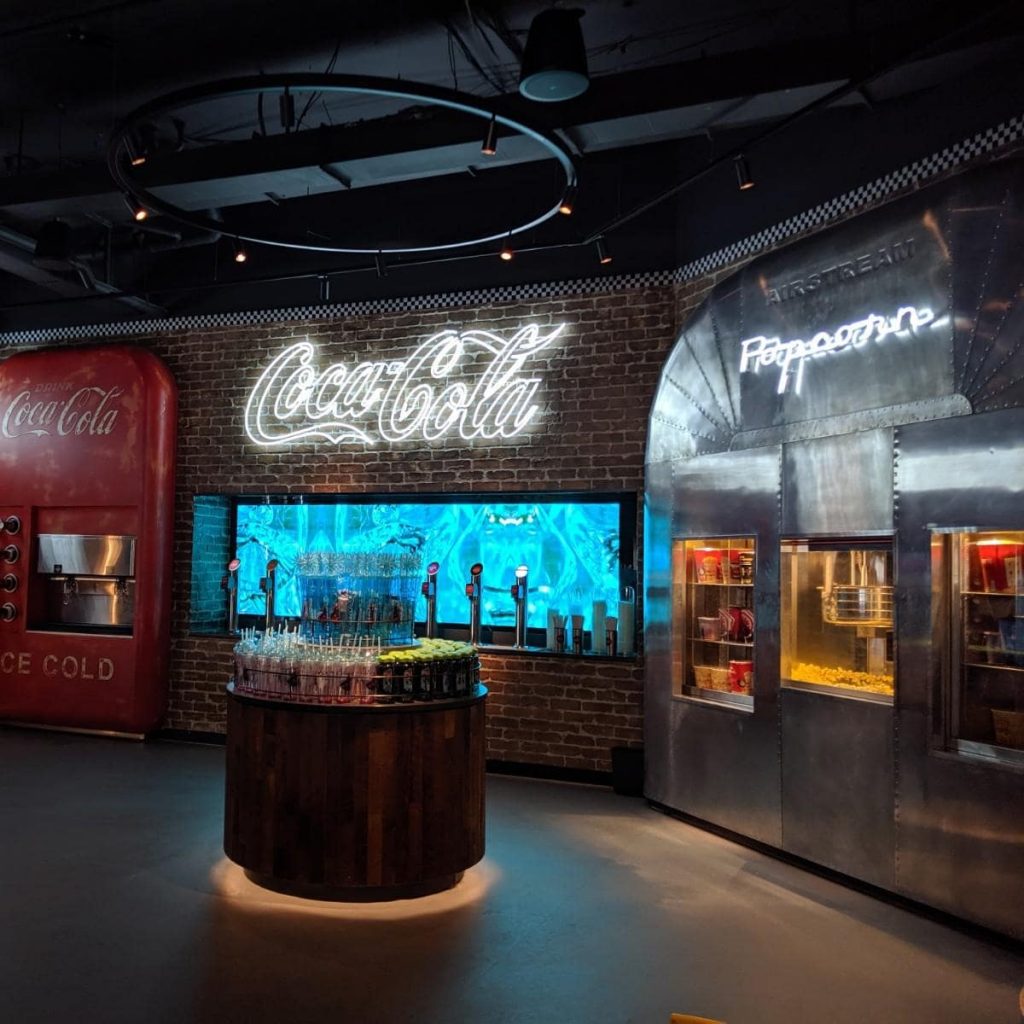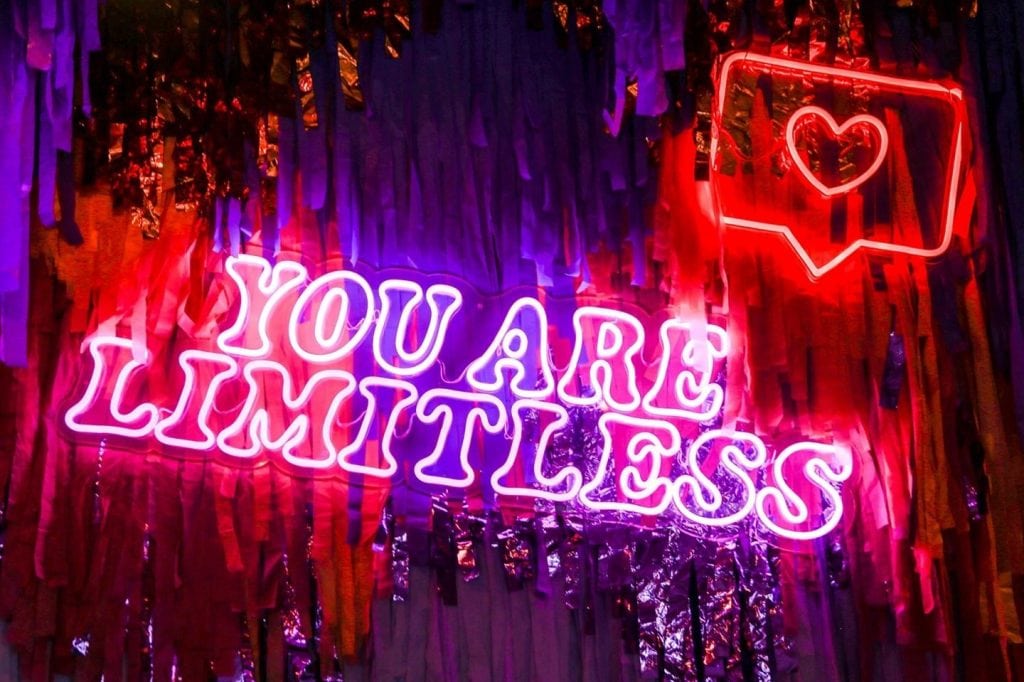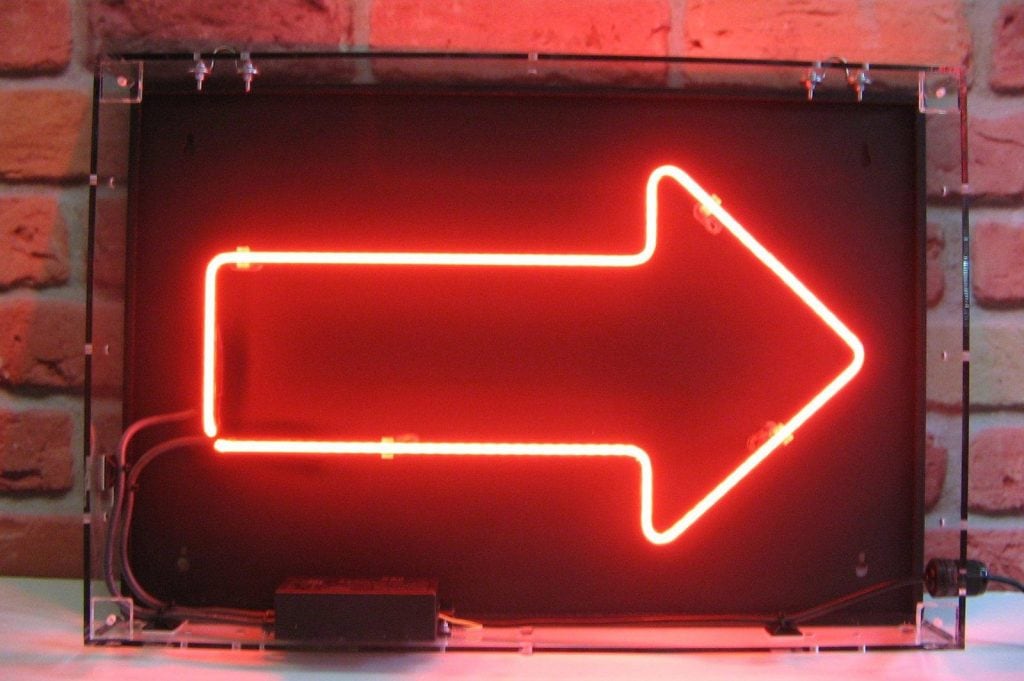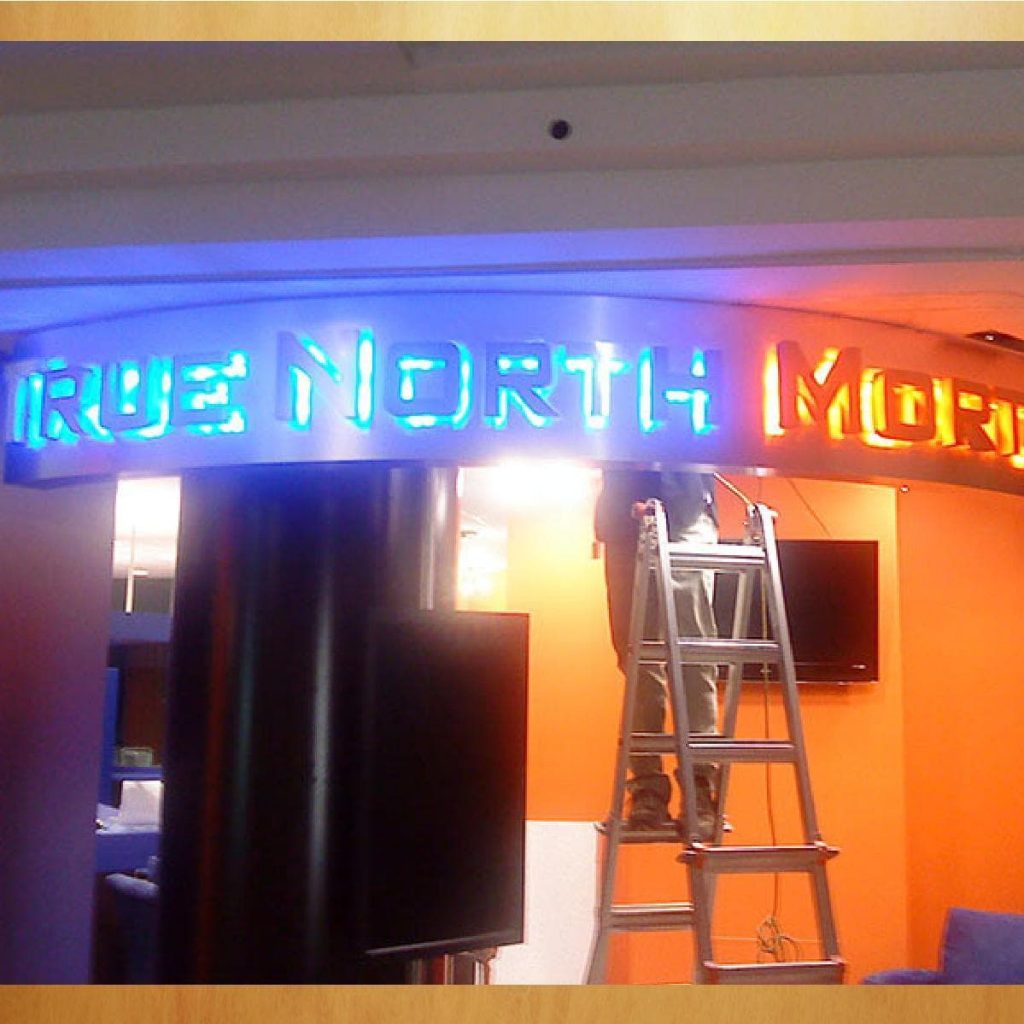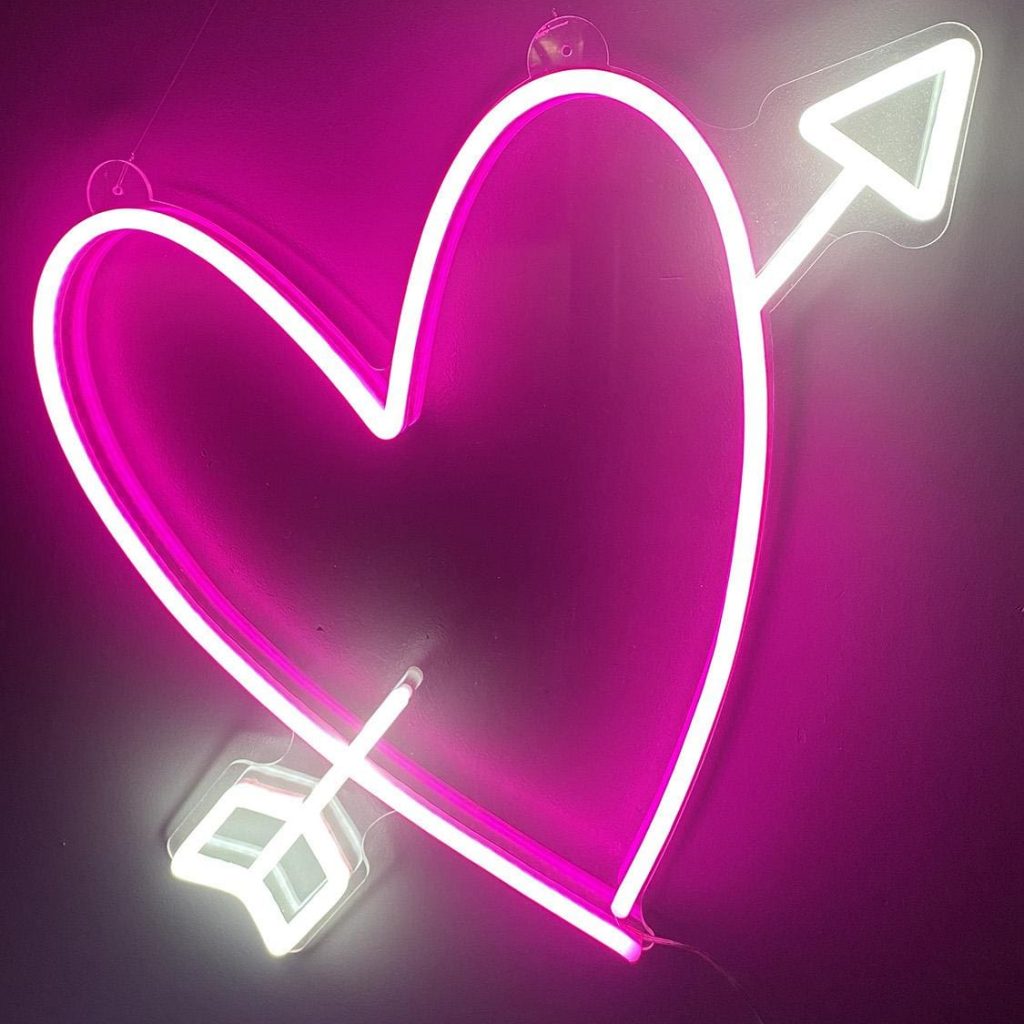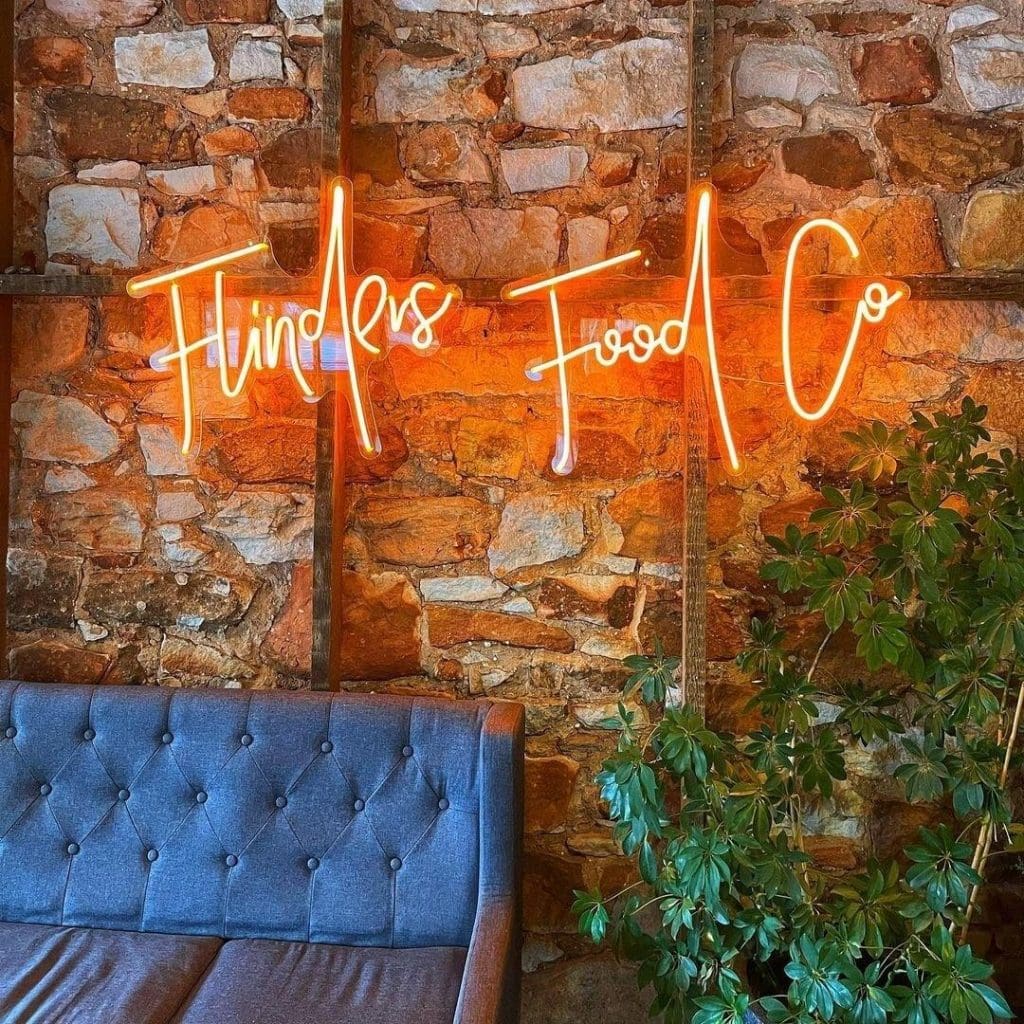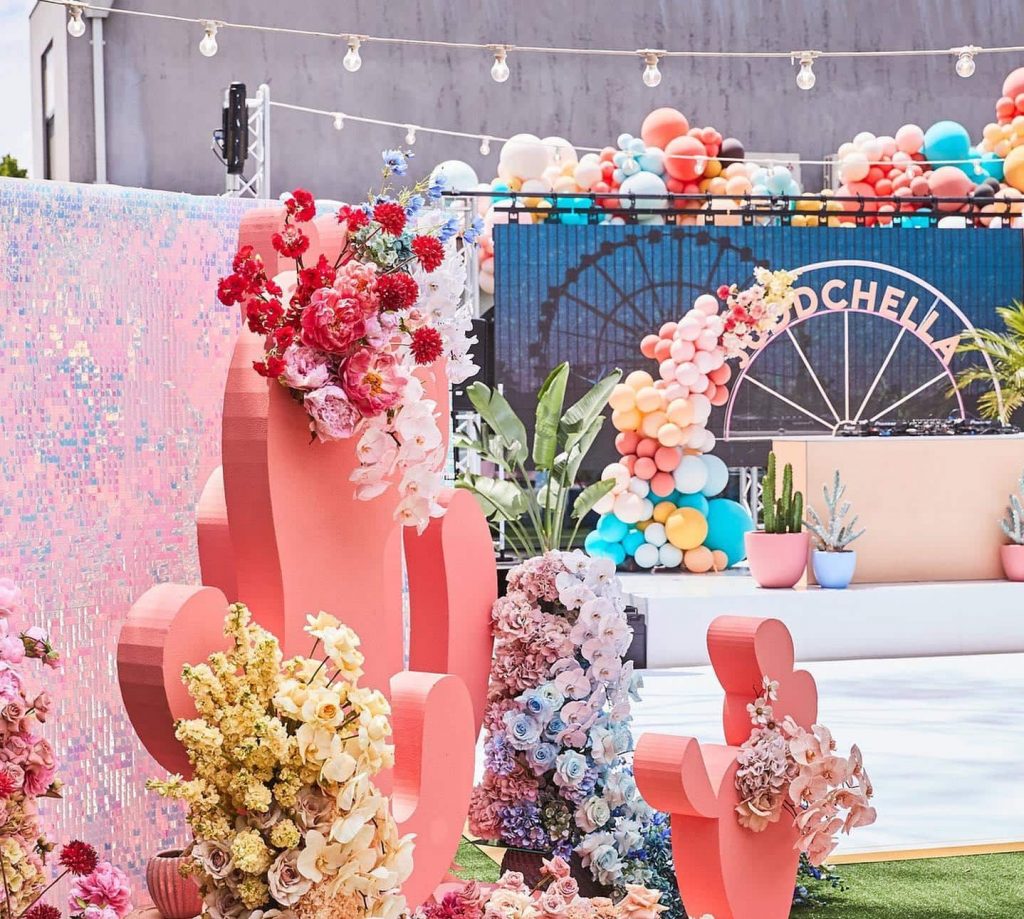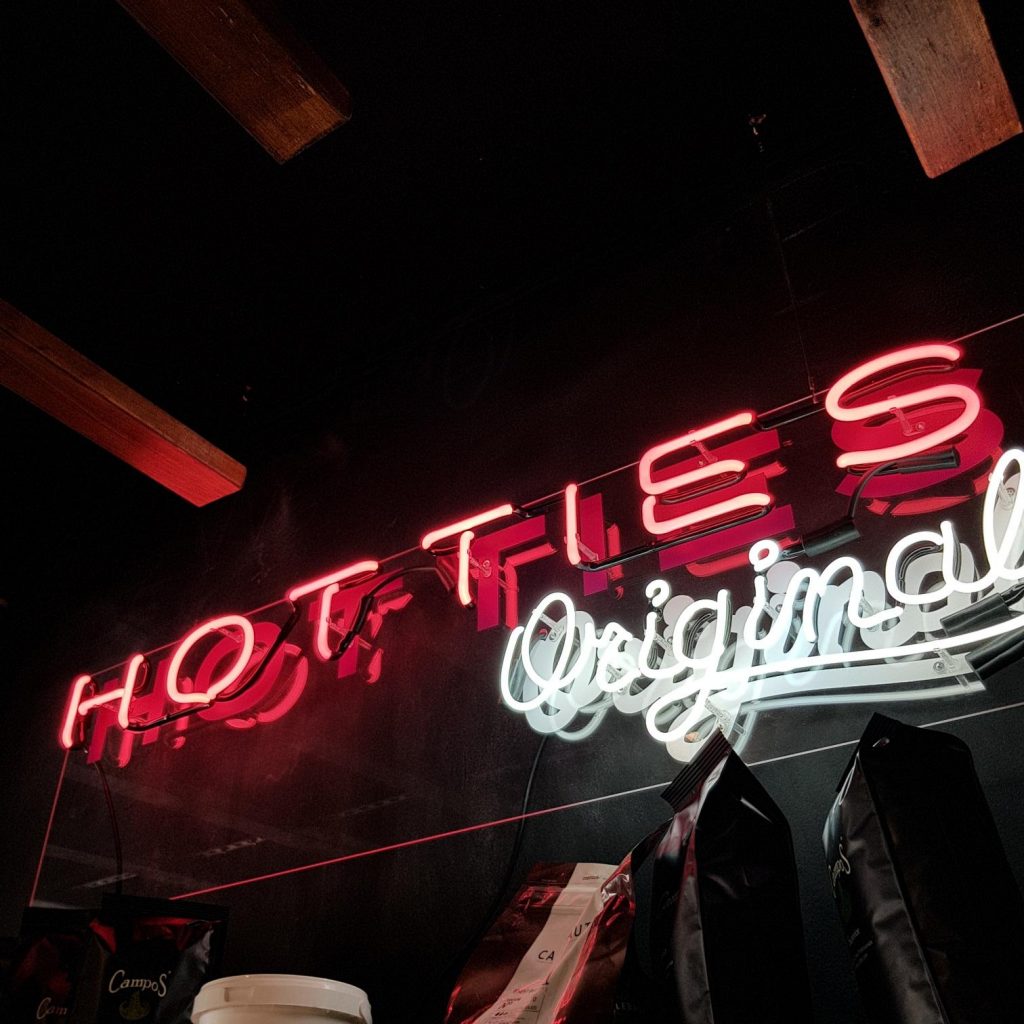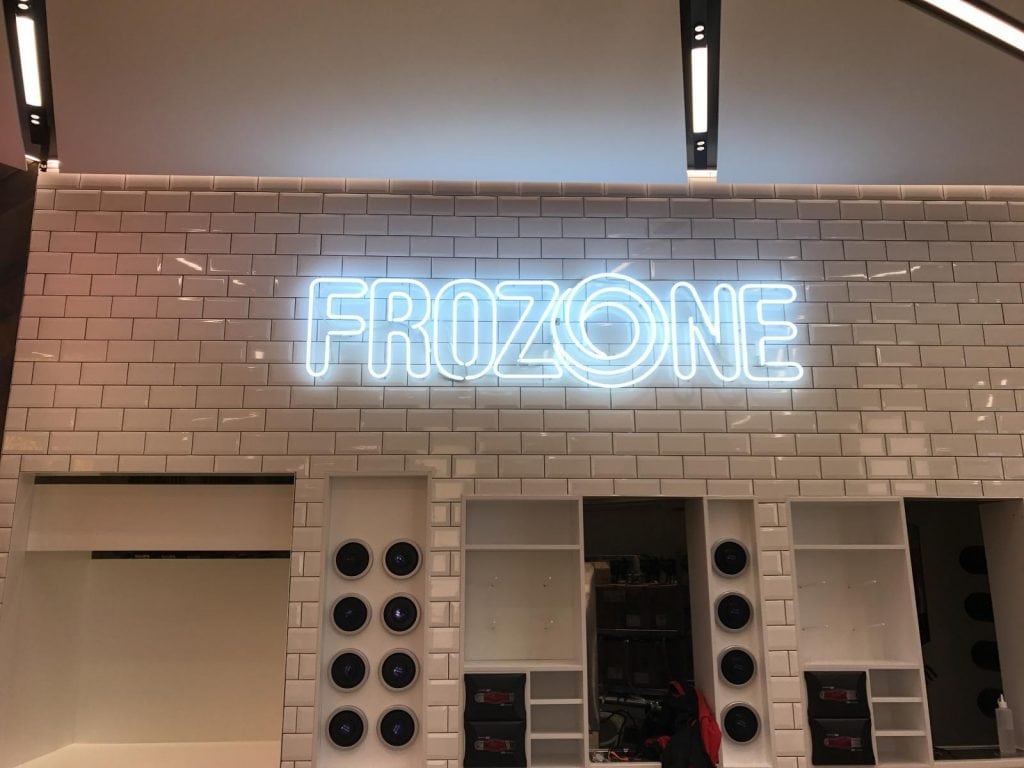One's initial thought upon hearing the term "neon lights" is likely that of shop signs. When an electrical current is run through these bulbs, they emit a bright reddish-orange light. Despite neon's reddish hue, it may be altered to produce a wide range of colours when combined with other chemicals. Due to their ability to grab the attention of passers-by, neon lights are perfect for usage in the advertising business.
Neon lights are most frequently associated with the advertising industry, but they have many other applications as well, including use as car starting lights and light emitters for high-intensity lamps or lasers. Today's blog post will shed light on the lesser-known facets of neon lighting. So if you would like to discover more, continue reading!
What is Neon Light?
Neon, a colourless, odourless noble gas that is extremely uncommon on Earth, is the inspiration for the name "neon" lights. Although we've discussed how manufacturers utilise other chemicals and gases to create different hues, traditional neon lights still employ a small quantity of neon gas and emit a reddish-orange glow.
Typically, neon lights are supplied in the form of glass tubes, which can be manipulated into a variety of creative forms to produce illustrative depictions of letters. Most people will recognise them as the neon signs used in advertising, which come in a variety of bright colours and make a striking statement.
How Are Neon Lights Made?
Now, how can we create these neon bulbs? If you have ever seen a neon sign, you know that neon gas is pumped into a glass tube to create the light. However, by combining neon with different gases, a wide spectrum of hues is possible. What follows is a breakdown of the various gases used to create neon lights and some generalisations about their properties.
Neon
Pure neon, as we've noted before, gives off a red light at regular settings. Lights with a greater concentration of neon gas will seem pinker or less intensely red.
Krypton
Krypton emits a whitish-yellow light, which is why it's used in the creation of so many different hues. If the colour is to be altered by adding krypton to lighting tubes, skilled artisans would often utilise tinted glass.
Xenon
Xenon has a purple-blue glow that can be altered by combining it with different gases.
Helium
In order to speed up the heating process, producers of neon lights in colder regions add helium to the tube, which already contains argon and mercury vapour. A pinkish red light is emitted by helium.
Argon
Blues with increased intensity are typically achieved by combining mercury vapour with argon. To get a wide range of hues, manufacturers would sometimes coat the inside of the glass tube with UV-sensitive phosphors. Blue, white, yellow, and green neon lights with a clear, frothy hue are likely made using argon gas.
Mercury Vapor
Neon lights are often made using either mercury vapour or neon, with the choice being made based on whether the maker prefers to work with warm or cold hues for the base colour. Companies typically employ mercury rather than neon to create cool colours like purple and green.
How Does Neon Light Work?
Here are the fundamentals of how neon lights function:
- Electrodes are located at both ends of neon tubes. You can run them on DC or AC current and they'll still function. However, if they are operating on DC current, the glowing effect will be limited to the area immediately surrounding one of their electrodes. Consequently, AC electricity is used to power the vast majority of neon lights.
- Injecting a sufficient amount of energy into the terminals via an electric current causes the neon gas's outer electrons to be stripped away.
- Due to a lack of electron kinetic energy, the neon light will not light up if an insufficient voltage is applied.
- The positively charged atoms are drawn to the tube's negative terminal, while the ejected electrons are drawn to the positive terminal. To put it simply, this finishes the electrical circuit.
- In the course of their free-floating journey down the tube, the atoms will collide with one another, exchanging the energy they generate in the process. Much heat is generated as a result of this.
- The energy (photons/light) emitted by the electrons as they return to their ground state is what we perceive as heat.
Types of Neon Light
LED neon lights are becoming increasingly popular, while classic neon lights are still widely used.
Traditional Neon Light

Neon lights have always been housed in glass tubes that have been fashioned by hand. When the atoms of these inert gases release energy, they give off brilliant colours, which they use to make light. Neon tubes are works of art in and of themselves, but they are also quite fragile and can easily be broken if not handled with care.
LED Neon Light
LED neon lights are made with closely spaced light-emitting diodes (LEDs), which allows the light from each diode to overlap and provide a brighter overall effect. Making a reliable source of illumination. LED neon lights are typically lighter and more durable than traditional neon lights because the diodes inside the LEDs are protected by polymer coats. They may be turned down to a low setting and do not require a lot of power to get going.
How Do You Select the Best LED Neon Light?
It's not easy to pick the perfect neon sign for your company, as there are many aspects to think about. Utility costs are heavily influenced by the lighting scheme you select for your commercial space. Furthermore, it would be best if you thought about how much money you can allocate to the lighting project. Think at the total cost of your choice, not just the upfront expense.
However, some companies now provide battery-operated neon and LED lights for more portable applications. It is important to remember that the voltage needs of various LED lights may vary, and to equip yourself accordingly. In order to work, some of these gadgets need specific types of electrical plug adapters.
Choose an LED light colour that complements your company's branding and logo. There is a wide range of colours available from LED manufacturers, so it's important to consider which ones would work best for your company carefully. When deciding where to put your LED lights, it's also important to think about the room's overall design scheme.
LED neon lights are available with either a rounded or flat back. Neon signs are more suited to use with spherical LED lights. LED lights with a flatter profile work better for general lighting or for highlighting architectural details. Lighting buildings with LED strips or tape lights is a great idea.
LED lights can be crafted from a variety of materials depending on the manufacturer. Find bulbs that won't fade, break, or chip and pick those instead. LED light tubes designed specifically for use in schools are available from some manufacturers; these lights are not constructed of glass and won't get too hot for children to touch. LED lights are also available in flexible, bendable flex materials. LED flex lighting is longer lasting and less cumbersome.
Since not all LED lights can be bent into any shape, the shape of your lighting project is another consideration when deciding which LED lights to purchase. You should first decide what kinds of shapes you want to make with the LED light before making the purchase. If you need lights that can bend and twist in any direction, LED flex neons are your best bet.
The brightness levels of neon lights can vary. It was previously said that classic neon lights generate a warmer and more beautiful glow, whereas LED lights offer brighter colours that are seen even from long distances. LED strip lights are able to provide light that is many times brighter than that of standard LED bulbs. To decide between a solid and a bubbly light, you must weigh your options.
The concept you're going for will have a significant impact on the style of your neon signs. LED lights are available that can be used for a variety of different architectural applications, as well as for special events and general ambient lighting. Having a clear idea of how you'll be putting your lights to use is crucial to making the right purchase. Think about the typeface you want to use before creating any neon texts. Avoid using obscure or small typefaces. Keep away from cursive typefaces if at all possible. You should use big fonts instead.
What Is the Purpose of LED Neon Light?
To draw attention to hidden details, LED neon lights are installed. Accent lighting that is well-executed is an efficient method of improving the visual appeal of a space and can breathe new life into otherwise dull exhibits. They are useful in a wide variety of contexts, such as:
Architectural Lighting
LED neon lights can be used in any kind of building design. LED lights may be used to bring any structure to life, whether it be a stairwell or a sculpture.
Artwork Lighting
LED lights allow artists to create stunning effects in their creations. LED lights can be used in a wide variety of media settings due to their adaptability. You can use energy-efficient LED lights into your artwork in more ways than one.
Car Lighting
Neon lights were first used for automotive illumination. Because of their low power consumption, LED lights are perfect for upgrading your trailer, car, or RV. That's why they're able to drastically lengthen your car's battery life.
Marine Lighting
LEDs are also widely used on boats and in the marine industry. Most boats at sea operate on a combination of high AC voltage and either 12 or 24 Volts DC. Using light-emitting diodes (LEDs) is an environmentally friendly and technologically advanced option for naval illumination. You may easily upgrade to the many advantages of LED lighting by replacing the halogen bulbs already installed in your vessel.
Special Events Lighting
LED lighting is a fantastic option for those who organise and design special events, as well as caterers, designers, audio and visual specialists, DJs, and others. LEDs offer greater excitement to events by illuminating the venue with LED lights that change colour and by providing additional lighting to sections as either an accent or ambient light.
Exhibit Lighting and Signage
By replacing fluorescent signs with LED lighting alternatives, you may make significant reductions in your energy use as well as maintenance costs. LED lights have a lifespan of up to 50,000 hours and require very little upkeep during that time. They also provide a great deal of flexibility as well as modern control systems, making it possible for you to effortlessly develop or design whatever LED exhibit lighting or signage you choose.
Commercial Lighting
RGB LED lights are an ideal choice for ambience lighting, task lighting, unique racks, window displays, clubs, nightspots, and bars, as well as any other areas of your business that you want to draw attention to. They create hues that are appealing to the eye and have the potential to bring in new clients for your business.
Home Lighting
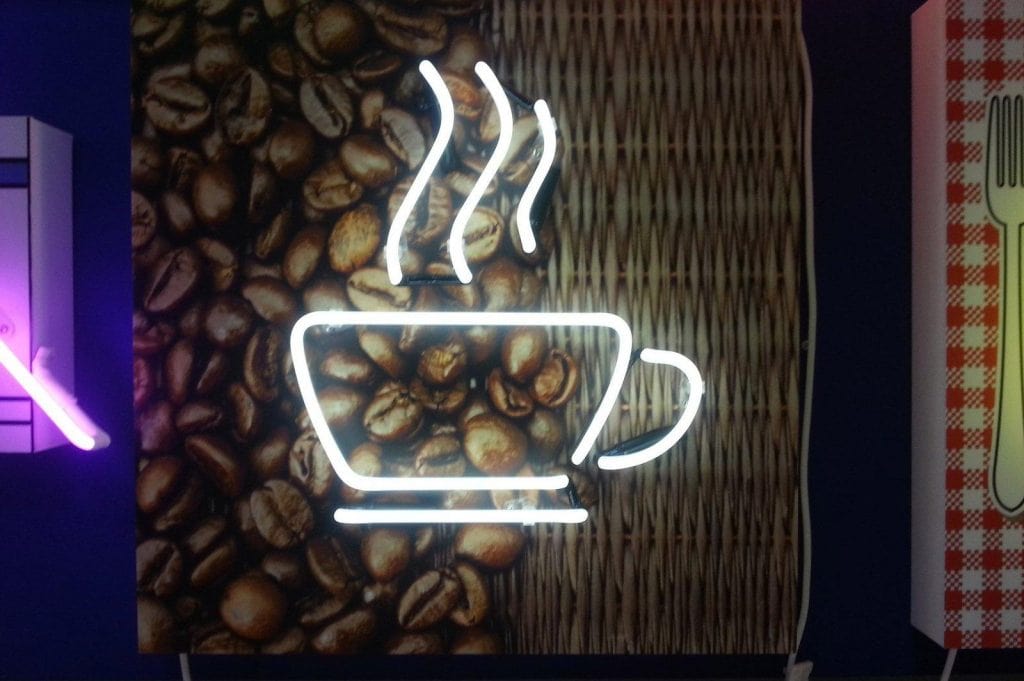
In conclusion, you may personalise LED neon lights and use them to adorn your house. Under-cabinet lighting can be accomplished using LED strip or tape lights, whilst indoor and outdoor lighting applications can be accomplished with LED modules. Converting your old lighting to LEDs is not going to be an easy process, but if you do it, you will be able to dramatically cut your energy use while maintaining a lighting design that is fantastic.
Gardens, which are an integral feature of our homes, require the same level of meticulous planning as any other room in the house. Neon LED lights are a fantastic alternative for use as a decoration in your garden. Your garden will have a greater visual appeal if you use the LED neon lights to illuminate some humorous gardening quotations. When you are renovating your little space, you should also pay close attention to the landscaping edging that does not require digging.
Conclusion
Neon is an odourless, tasteless noble gas with a very low abundance on our planet. Glass tubes containing neon lights are provided, allowing for a wide range of artistic expression. The majority of people will recognise them as the familiar neon billboards. An explanation of the various gases used in neon production. For this light to be produced, neon gas is pressurised inside a glass tube.
Neon can be made to produce a wide range of colours when mixed with various gases. Neon tubes have electrodes at each end and require either direct current (DC) or alternating current (AC) to function. LED neon lights, which use diodes enclosed in plastic, are typically more lightweight and durable than conventional neon lights. Depending on the manufacturer, LED lights can be made from a wide range of materials. Portable neon and LED lights powered by batteries are now available from a few manufacturers.
There should be some consideration given to the room's aesthetics as a whole before you decide where to install your LED lighting. Lighting-emitting diodes (LEDs) are now readily available, and they can be used for a wide range of architectural purposes, as well as for occasional and general lighting. Prior to making any neon texts, decide on a typeface. If at all possible, avoid using tiny or obscure typefaces.
Content Summary
- When an electrical current is run through these bulbs, they emit a bright reddish-orange light.
- Despite neon's reddish hue, it may be altered to produce a wide range of colours when combined with other chemicals.
- Due to their ability to grab the attention of passers-by, neon lights are perfect for usage in the advertising business.
- Neon lights are most frequently associated with the advertising industry, but they have many other applications as well, including use as car starting lights and light emitters for high-intensity lamps or lasers.
- Neon, a colourless, odourless noble gas that is extremely uncommon on Earth, is the inspiration for the name "neon" lights.
- Although we've discussed how manufacturers utilise other chemicals and gases to create different hues, traditional neon lights still employ a small quantity of neon gas and emit a reddish-orange glow.
- Typically, neon lights are supplied in the form of glass tubes, which can be manipulated into a variety of creative forms to produce illustrative depictions of letters.
- Most people will recognise them as the neon signs used in advertising, which come in a variety of bright colours and make a striking statement.
- If you have ever seen a neon sign, you know that neon gas is pumped into a glass tube to create the light.
- However, by combining neon with different gases, a wide spectrum of hues is possible.
- What follows is a breakdown of the various gases used to create neon lights and some generalisations about their properties.
- Lights with a greater concentration of neon gas will seem pinker or less intensely red.
- Xenon has a purple-blue glow that can be altered by combining it with different gases.
- A pinkish red light is emitted by helium.
- Consequently, AC electricity is used to power the vast majority of neon lights.
- Making a reliable source of illumination.
- It's not easy to pick the perfect neon sign for your company, as there are many aspects to think about.
- Think at the total cost of your choice, not just the upfront expense.
- Choose an LED light colour that complements your company's branding and logo.
- When deciding where to put your LED lights, it's also important to think about the room's overall design scheme.
- Since not all LED lights can be bent into any shape, the shape of your lighting project is another consideration when deciding which LED lights to purchase.
- The brightness levels of neon lights can vary.
- To decide between a solid and a bubbly light, you must weigh your options.
- The concept you're going for will have a significant impact on the style of your neon signs.
- LED lights are available that can be used for a variety of different architectural applications, as well as for special events and general ambient lighting.
- Having a clear idea of how you'll be putting your lights to use is crucial to making the right purchase.
- Think about the typeface you want to use before creating any neon texts.
- To draw attention to hidden details, LED neon lights are installed.
- You can use energy-efficient LED lights into your artwork in more ways than one.
FAQs About Neon Lights and Signs
While the average lifespan of a neon sign is eight to fifteen years, many of them last much longer than that. A sign's lifespan can be shortened by leaving it on for extended periods of time, and it also increases the risk of overheating and electrical surge damage.
Neon signs, which were common from the 1920s to the 1960s and again in the 1980s, require them to create the bright, eye-catching displays of colour that are their hallmark.
The neon glass tubes in the metal conduits are linked together by high-voltage electrical wires. When temperatures get too high, the wires powering the sign can melt, rendering it useless in whole or in part.
Believe it or not, no electricity is required here, despite the fact that many people think they must plug it in. When excited by either electricity or ultraviolet light, gas molecules release electrons, causing the gas to glow.
Neon signs are stunning to behold, but they pose a danger if they aren't regularly serviced. Injury from shattered glass, electric shock, or a fire hazard are all examples of the dangers that could arise.

